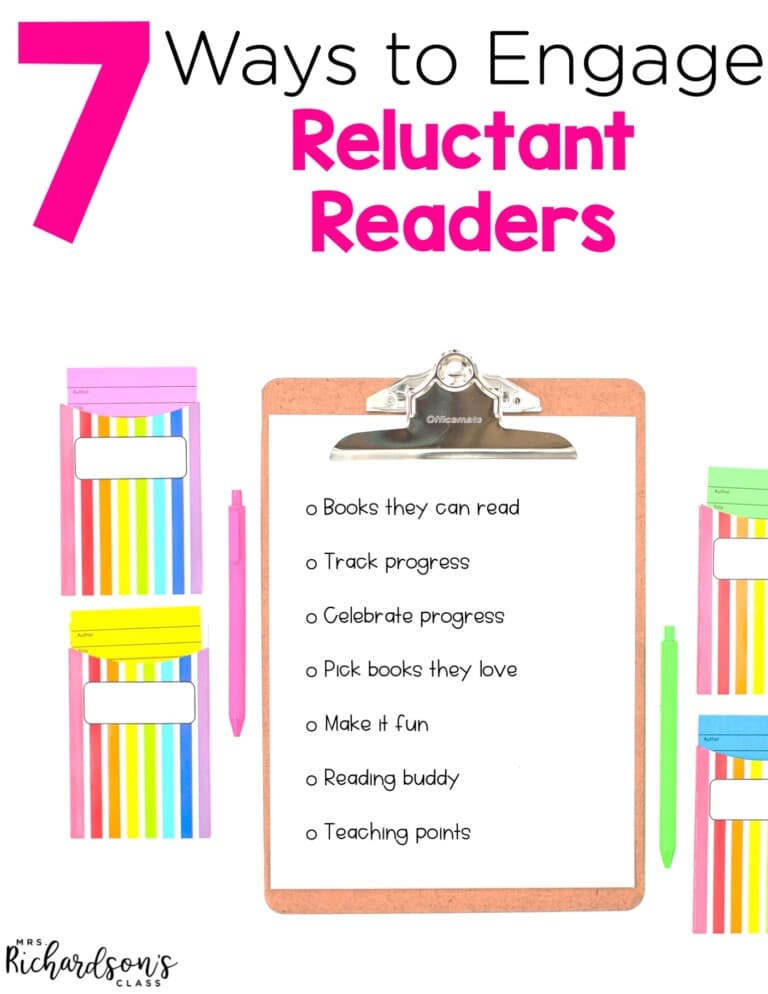


You sit down at your table, get your readers reading, then freeze.
Oh no! I need to check for comprehension.
What will my focus be?
If you have followed me for even a few months, you probably have heard me share about my guided reading journey. It took some time, but once I found my groove, I felt great about my groups! Here is what I found that worked.
Give it a try!
Before the students at my table start reading, I give them a decoding strategy to add to their toolbox if they get stuck on a word. Accuracy’s importance shouldn’t be ignored, but I do want the focus to be on comprehension to help these young readers develop a strong foundation.
After the decoding strategy, I give students a comprehension strategy so that I can check for their comprehension and give them different things to think about as they read.
Let’s jump into three reading comprehension strategies for second grade guided reading that are perfect to teach during the beginning and middle of the year.
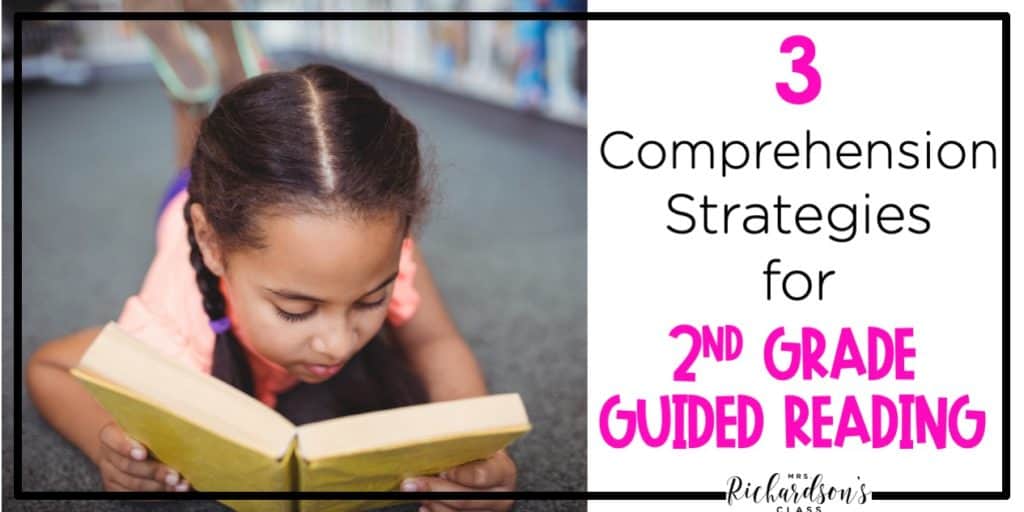
This concept takes something that we have been working on for several guided reading levels and add details to it. We build upon what they already know and have already practiced. When students are able to share details, it means they comprehend the storyline and understand what the author is saying.
Readers should be able to do this for both fiction and nonfiction. When students are moving towards levels L and M, they will focus on using both specific and descriptive language while retelling.
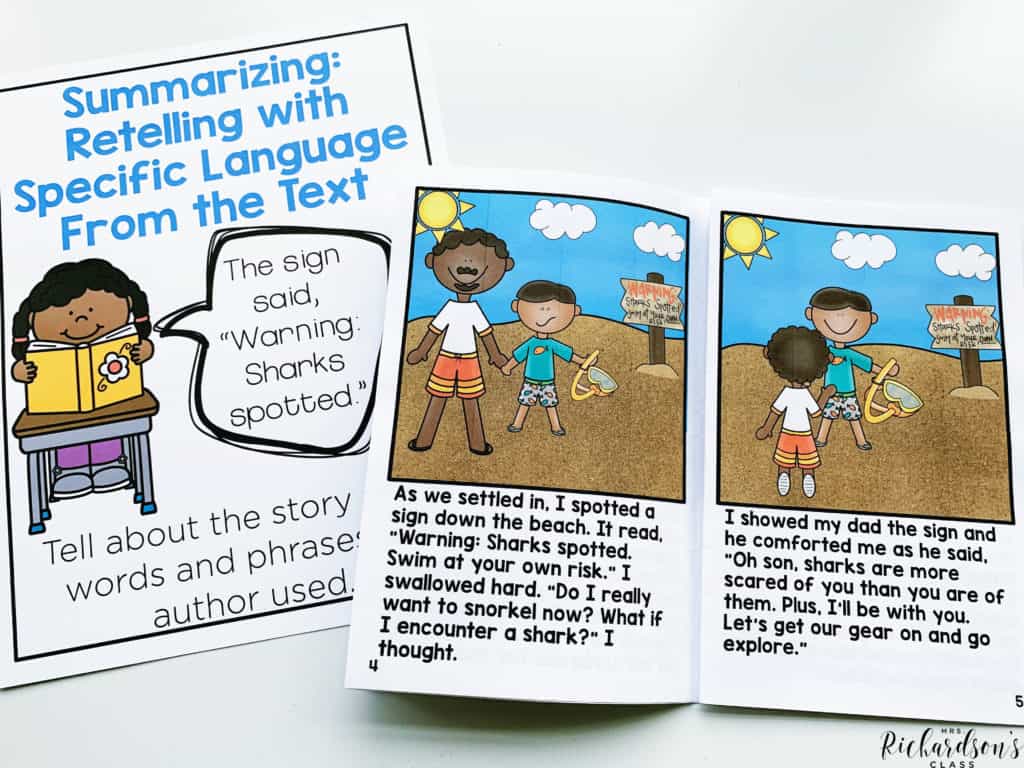
Day 1: After reading the book, show them the teaching poster and say, “Authors are very thoughtful with their words. They picked special words and phrases to share in this story. Let’s retell the story together. I want you to be sure to include specific things the author said. Remember, we are not memorizing the book – just using some of the author’s important words to help us.”
Day 2: Before students read their book, say, “Today as you are reading, remember to hold the repeated phrases or special things the characters say in your head. As we retell the story after, these words help us retell well. Let’s read with a quiet, whisper voice.”
Making predictions is a strategy our readers have been working on since kindergarten. By first grade, their predictions are becoming more advanced and specific. Finally, by second grade, our readers are practicing making predictions while they read and revising them.
This is important because it ensures that readers are engaged in the text and are understanding it. If young readers can’t monitor their predictions and check them as they read, then they probably don’t understand what they are reading.
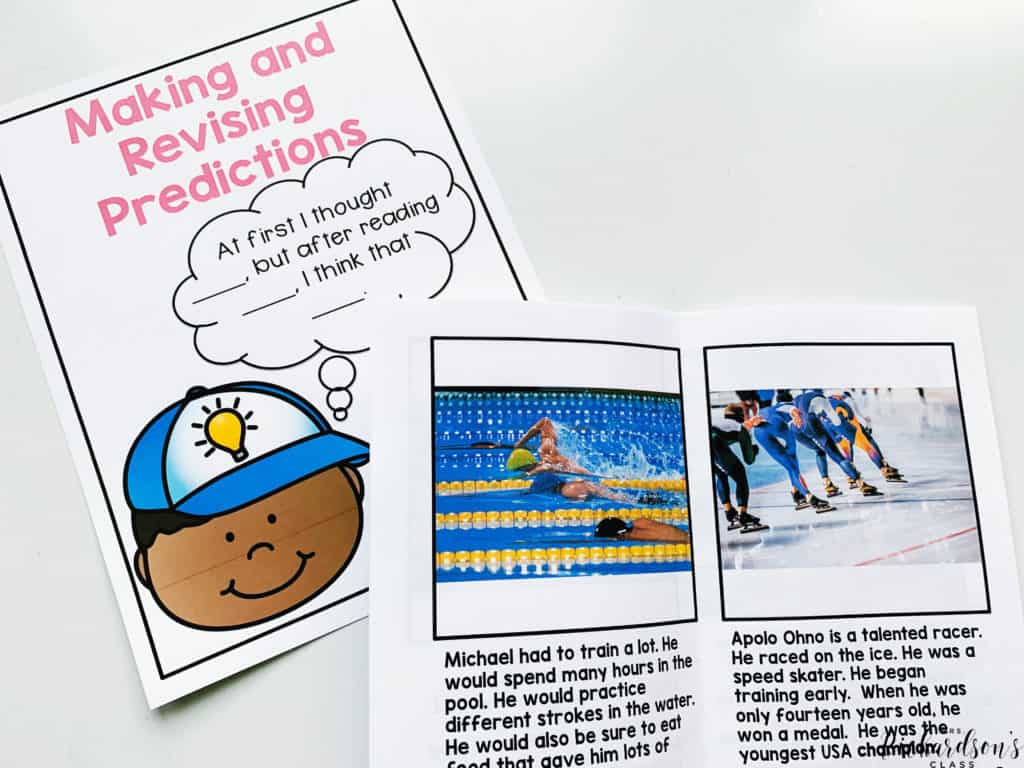
Day 1: This is how the discussion at the table might sound before reading a text. “Before we preview the text, let’s make a prediction. As you read today, you may need to change your prediction, and that is okay. Let’s go on a picture walk to see what a dairy farmer does! We make predictions before reading. Then, as we read and discover new information, we revise our prediction.”
Then, after students have read the book, the discussion might start like this, “Before reading, you predicted one thing. Did that change as you read the book? Tell me about that.”
Day 2: Because students will have already had an introduction to revising predictions, simply ask them to come up with some predictions and make note of how they changed. Then, after reading, you could say, “Before reading, you predicted one thing. Did that change as you read the book? Tell me about that.”
This is another skill that we have been scaffolding for our students. For this guided reading comprehension strategy in second grade, we take a skill that they have been working on for several levels – inferring – and add details. This is a skill that is new at this level and really challenges them to both comprehend the text and think beyond the text. We are entering the higher level of Bloom’s here!
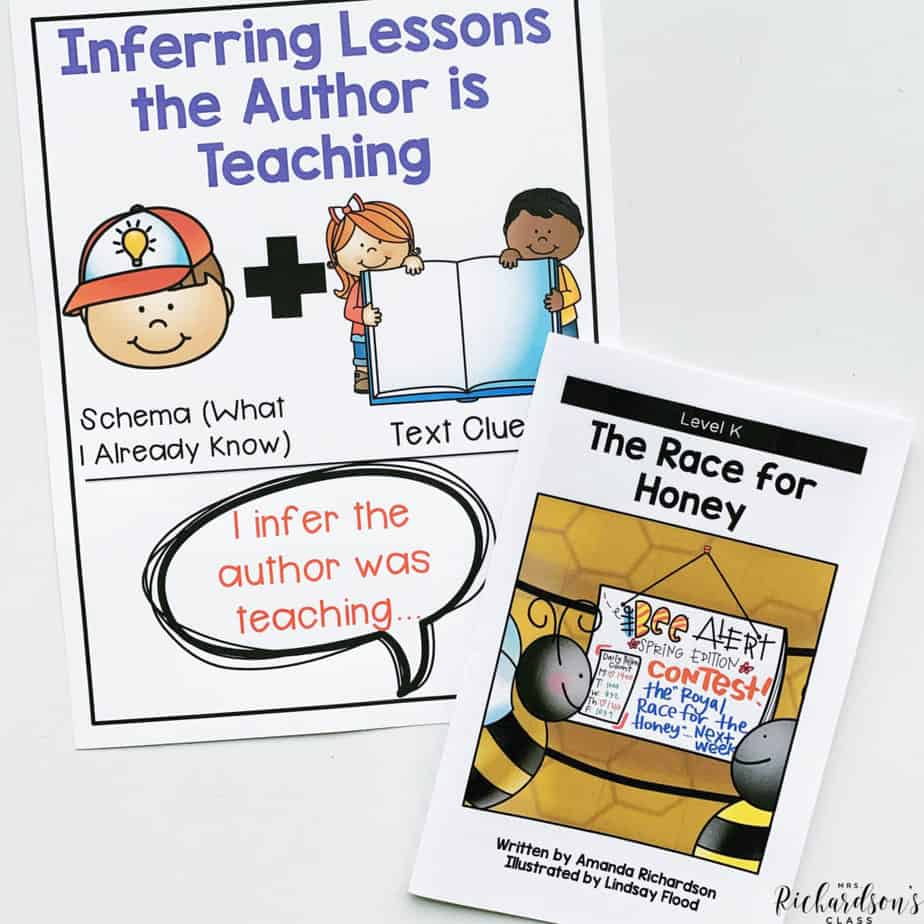
Day 1: On the first day, readers should focus on using their schema and clues from the text to make an inference. You could say, “When authors write stories, sometimes they want to teach a lesson. What lesson can you infer that the author was trying to teach with this text?”
Day 2: Review the strategy from day one. It might sound like, “When authors write stories, sometimes they want to teach a lesson. What lesson can you infer that the author was trying to text with this text?”
When your readers get to guided reading levels K-M in second grade, they are silently reading most of the time. We only want them to read aloud softly so that we can check in on them – think of it as a mini-conference. This means that monitoring comprehension is even more important than ever. We use these conversations to double-check and know if they are understanding what they are reading. Helping our second grade students in guided reading learn these comprehension strategies moves them forward in reading.
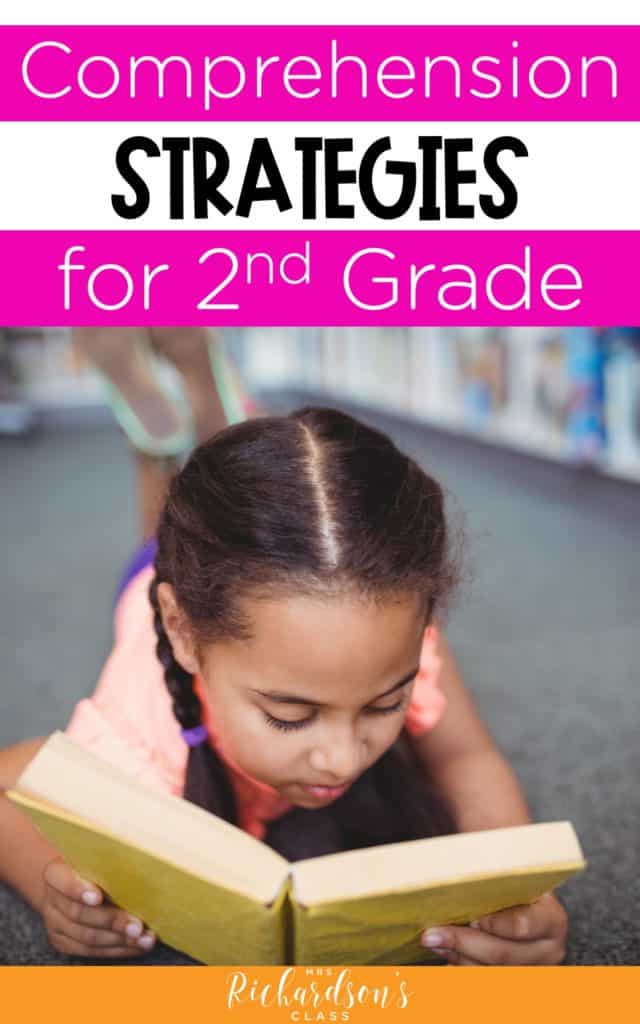
pin it
If you need some more tips on helping readers struggling with reading comprehension, check out THIS POST.
If you want to try some effective ways to check for reading comprehension, THIS POST has different ways to check for it before, during, and after reading.
If you want to have everything you need to be set for guided reading in second grade, check out the Guided Reading Bundle for levels K-M. Each level has:
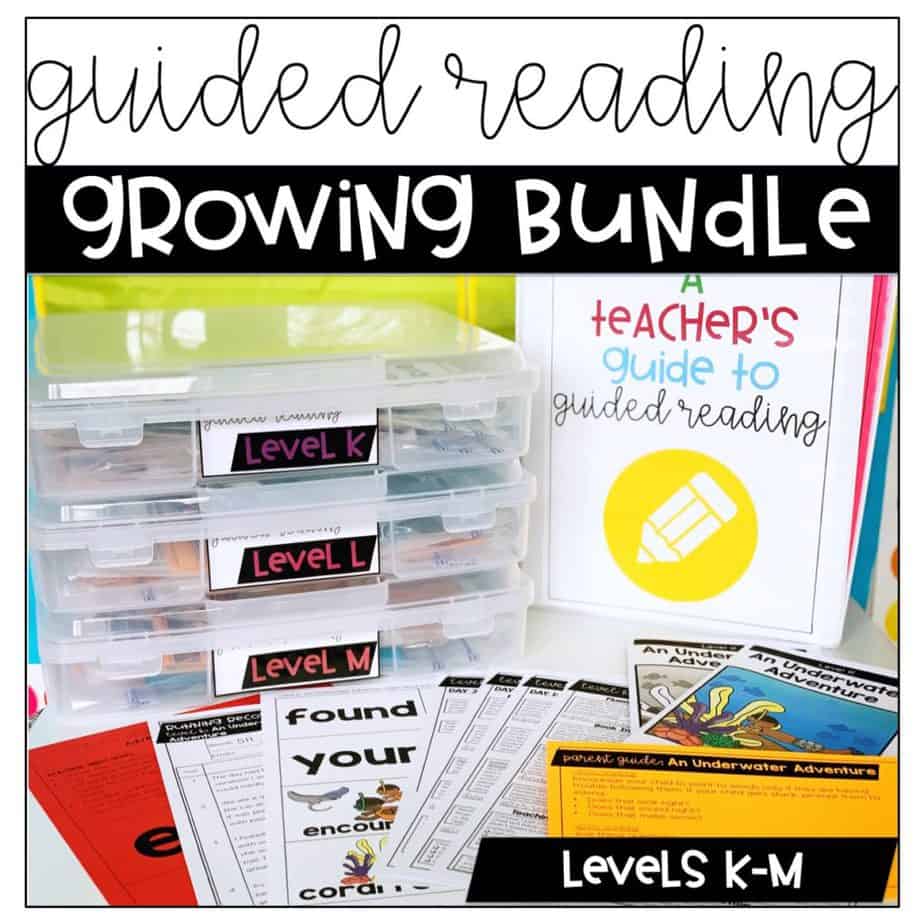
You don’t have to take my word for it – teachers who are using this resource in their classrooms are excelling in guided reading! Audrey said,
Eilieen said,
This resource is for every teacher whether you have been doing guided reading for a while, are brand new, or just don’t have access to quality guided reading resources at your school.
Grab your Second Grade Guided Reading Bundle and start using it today! Let me know if you have any questions at all. I’m always happy to help!

Want to use the latest research to boost your readers during small groups? This FREE guide is packed with engaging ideas to help them grow!

I’m a K-1 teacher who is passionate about making lessons your students love and that are easy to implement for teachers. Helping teachers like you navigate their way through their literacy block brings me great joy. I am a lifelong learner who loves staying on top of current literacy learning and practices. Here, you’ll find the tools you need to move your K-2 students forward!


| Cookie | Duration | Description |
|---|---|---|
| cookielawinfo-checkbox-analytics | 11 months | This cookie is set by GDPR Cookie Consent plugin. The cookie is used to store the user consent for the cookies in the category "Analytics". |
| cookielawinfo-checkbox-functional | 11 months | The cookie is set by GDPR cookie consent to record the user consent for the cookies in the category "Functional". |
| cookielawinfo-checkbox-necessary | 11 months | This cookie is set by GDPR Cookie Consent plugin. The cookies is used to store the user consent for the cookies in the category "Necessary". |
| cookielawinfo-checkbox-others | 11 months | This cookie is set by GDPR Cookie Consent plugin. The cookie is used to store the user consent for the cookies in the category "Other. |
| cookielawinfo-checkbox-performance | 11 months | This cookie is set by GDPR Cookie Consent plugin. The cookie is used to store the user consent for the cookies in the category "Performance". |
| viewed_cookie_policy | 11 months | The cookie is set by the GDPR Cookie Consent plugin and is used to store whether or not user has consented to the use of cookies. It does not store any personal data. |
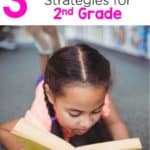
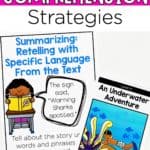
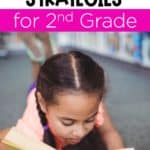
2 Responses
Will these work for digital learning?
Hi Kim! Yes! The books are now all available in a digital format. I am SO sorry that I missed your comment some how! Please let me know if you need anything!